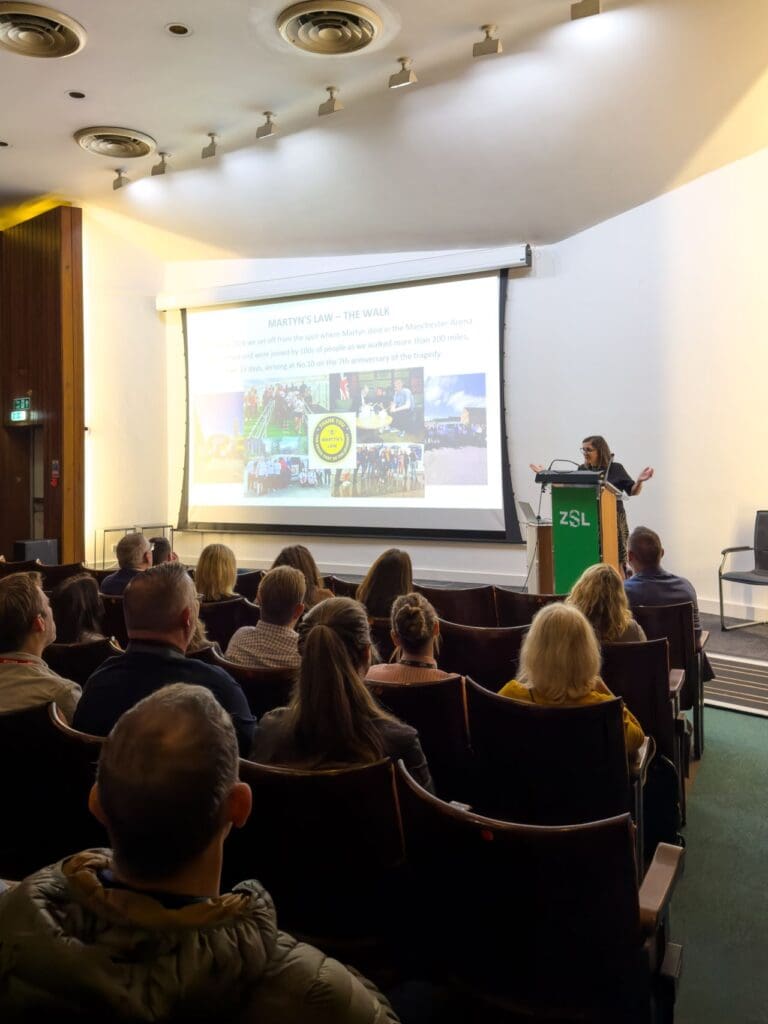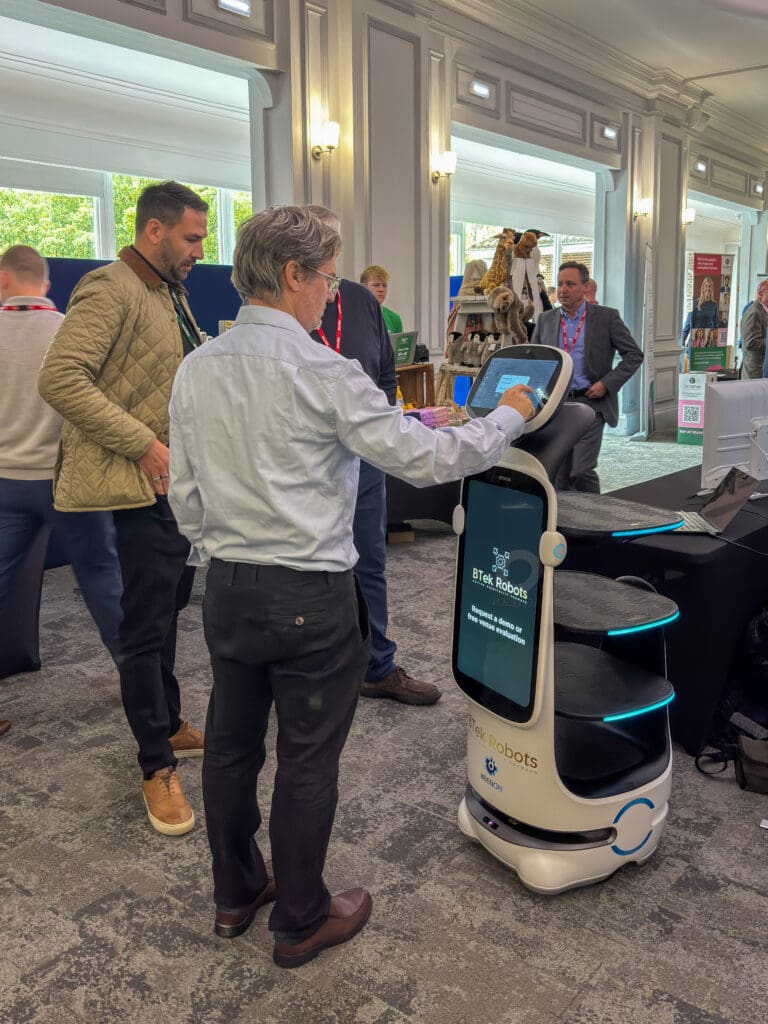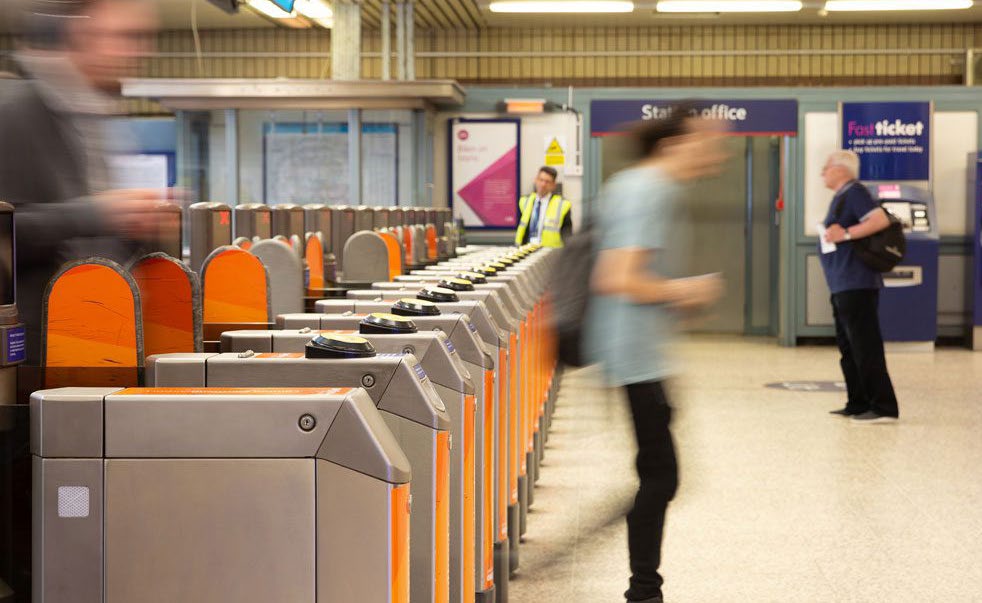Experts from across the UK gathered for Amulet’s 2025 Innovation Day last month, held at the iconic ZSL London Zoo.
The day began with an impactful speech from Figen Murray on the creation and implementation of Martyn’s Law, before our supply chain partners demonstrated the latest security technology innovating site protections, from lightweight drones and metal detectors to smoke screens and robots.
To close the day, visitors enjoyed a tour of the zoo, seeing penguins, butterflies, giraffes and gorillas enjoying themselves despite light rain.
An opening speech from Figen Murray
The morning started with a powerful and informative presentation from keynote speaker Figen Murray, the force behind Martyn’s Law. Figen discussed her tireless campaigning in the years after the loss of her son, Martyn Hett, in the Manchester Arena terror attack in 2017.

Her speech included a detailed account of the hours, days, and years following his loss, including the moment she realised, while attending a concert, how few security measures were implemented at large venues.
In 2018, Figen began working with Nick Aldworth, former chief superintendent for the Metropolitan Police and Brendan Fox, co-founder of Survivors Against Terror, to develop the white paper that eventually became Martyn’s Law. It detailed the need for small and large premises to be prepared and have plans in place in the event of an attack.
After cross-country campaigning, five prime ministers, pre-legislative scrutiny, and the full parliamentary legislative process, Martyn’s Law, officially titled the Terrorism (Protection of Premises) Act, received Royal Assent in April 2025.
The requirements of Martyn’s Law
Martyn’s Law provides two tiers for venues: a 200-799 occupancy standard tier and an enhanced 800 person+ tier. Requirements range from basic evacuation plans to advanced threat and access controls.
Under the Security Industry Authority’s regulatory role, the law is currently in a 24-month implementation period, and Figen is confident that it will be enforced by the 10th anniversary of Martyn’s passing, the 22nd May 2027. The Home Office has developed two guidance documents: ProtectUK’s myth buster document, and its summary leaflet.
She provided some sobering final thoughts, including that of the thousands of people who are flagged after repeated terror-related searches, any one of them could be a lone attacker. When it comes to these terror attacks, it’s not a matter of if, it is a matter of when.
Figen closed by emphasising that organisations can prepare now by reviewing the safety protocols listed on their websites, training staff with practice lockdowns, developing and teaching invacuations and evacuation procedures, and taking part in ACT Awareness e-Learning and SCaN for all Staff training modules.
Enhancing the human experience
Following Figen’s speech, attendees met the innovators developing comprehensive solutions. Our guest services provider On Verve was near the door, greeting visitors with friendly faces and sharing their quick guide for creating moments that matter in the workplace. BTek Robots also showcased the customer service side operations with its interactive hospitality robot moving around the floor, which can help colleagues transport goods and even sing happy birthday.

Eyes everywhere
From the skies to vacant properties, organisations showcased their comprehensive surveillance equipment that protects sites remotely. Sky Revolutions’ lightweight drone and dock systems provide fast-flying visual deterrents for sites like quarries and are now operational remotely due to Civil Aviation Authority regulatory updates.
Hikvision recorded the event live to demonstrate its AcuSeek intelligent video search capabilities. Based on a Large Multimodal Model, the system enables open-ended text-to-image search and alarm triggering based on the presence of persons, vehicles, or objects, reviewing footage more quickly and accurately than the human eye.
SiteGuard’s autonomous solar-powered towers offered visual deterrence, motion detection, and evidence capture for vacant properties without fixed power or network capabilities, including smoke detectors, sound alarms and two-way intercoms.
Layered protection
The latest personal protective equipment and scanning tools were also on display. RISK Metal Detectors displayed its sleek, transportable detectors, handheld scanners and shoe scanners, designed for easy implementation, no matter the location. Able to detect weapons and contraband, including screwdrivers, knives and e-vapes, the detectors are a low-cost alternative to traditional, bulky detection equipment.
InterConnective Security Products presented a range of equipment that keeps officers well protected and connected, including body cameras, handheld scanners and patrol system applications for Android devices. Defence Composites also exhibited its lightweight, durable protective body armour used by Travel Safety Officers across our train operating company customers, demonstrating how the equipment has evolved from clunky pieces to transportable protection.
Smoke Screen provided one of the day’s most immersive demonstrations. Visitors at its tent were enveloped in visibility-reducing fog, showing how it prevents assailants from seeing or navigating spaces in retail locations, jewellers and museums with high-value items. The fluid used left no residue, had no smell, and was food safe.

The final showcase
Following the many demonstrations and products on display, attendees enjoyed a tour of the historic zoo grounds. Starting with the penguin pool, through to the butterfly enclosure and on to observe the sub-Saharan animals, visitors enjoyed seeing animals in their natural element.
Key takeaways
Despite the fun of touring the zoo, our 2025 Innovation Day reinforced one crucial message: preparation.
Figen Murray’s powerful testimony served as a reminder that businesses need to review their procedures and enhance their safety measures now. The equipment on display showed just some of the technology that can help a business, depending on its needs: from advanced monitoring systems and personal protective equipment for officers and staff, to safety screening tools and deterrence tools that create layers of protection.
As Figen emphasised, it’s not a matter of if, but when. Preparation can mean the difference between a robust emergency response and a site left vulnerable.

